Filter by

Folkbiology
"A Bradford book."OCLC-licensed vendor bibliographic record.
- Edition
- -
- ISBN/ISSN
- 9780262279611
- Collation
- 1 online resource (ix, 504 pages) :illustrations
- Series Title
- -
- Call Number
- -

From Embryology to Evo-Devo: A History of Developmental Evolution
Historians, philosophers, sociologists, and biologists explore the history of the idea that embryological development and evolution are linked.Although we now know that ontogeny (individual development) does not actually recapitulate phylogeny (evolutionary transformation), contrary to Ernst Haeckel's famous dictum, the relationship between embryological development and evolution remains the su…
- Edition
- -
- ISBN/ISSN
- 9780262277976
- Collation
- 1 online resource (vii, 569 pages) :illustrations.
- Series Title
- -
- Call Number
- -

From molecule to metaphor: A Neural theory of language
"A Bradford book."In From Molecule to Metaphor, Jerome Feldman proposes a theory of language and thought that treats language not as an abstract symbol system but as a human biological ability that can be studied as a function of the brain, as vision and motor control are studied. This theory, he writes, is a "bridging theory" that works from extensive knowledge at two ends of a causal chain to…
- Edition
- -
- ISBN/ISSN
- 9780262272544
- Collation
- 1 online resource (xx, 357 pages) :illustrations
- Series Title
- -
- Call Number
- -
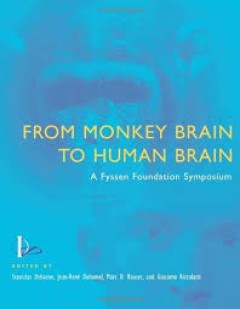
From Monkey Brain to Human Brain: A Fyssen Foundation Symposium
"Proceedings of the ninth Fyssen Symposium entitled "From monkey brain to human brain" which was held at the Pavillon Henry IV in St-Germain-en-Laye from 20 to 23 June 2003"--Preface.Leaders in cognitive psychology, comparative biology, and neuroscience discuss patterns of convergence and divergence seen in studies of human and nonhuman primate brains.The extraordinary overlap between human and…
- Edition
- -
- ISBN/ISSN
- 9780262271417
- Collation
- 1 online resource (xvii, 400 pages) :illustrations (some color).
- Series Title
- -
- Call Number
- -

Numbered lives :life and death in quantum media
A feminist media history of quantification, uncovering the stories behind the tools and technologies we use to count, measure, and weigh our lives and realities. Anglo-American culture has used media to measure and quantify lives for centuries. Historical journal entries map the details of everyday life, while death registers put numbers to life's endings. Today we count our daily steps with fi…
- Edition
- -
- ISBN/ISSN
- 9780262350174
- Collation
- 1 online resource (240 pages).
- Series Title
- -
- Call Number
- -

The handbook of brain theory and neural networks
"A Bradford Book.""Dramatically updating and extending the first edition, published in 1995, the second edition of The Handbook of Brain Theory and Neural Networks presents the enormous progress made in recent years in the many subfields related to the two great questions: How does the brain work? and, How can we build intelligent machines? Once again, the heart of the book is a set of almost 3…
- Edition
- 2nd ed.
- ISBN/ISSN
- 0262011972
- Collation
- 1 online resource (xvii, 1290 pages) : illustrations.
- Series Title
- -
- Call Number
- 005 HAN
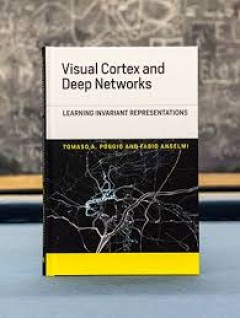
Visual Cortex and Deep Networks: Learning Invariant Representations
A mathematical framework that describes learning of invariant representations in the ventral stream, offering both theoretical development and applications.The ventral visual stream is believed to underlie object recognition in primates. Over the past fifty years, researchers have developed a series of quantitative models that are increasingly faithful to the biological architecture. Recently, …
- Edition
- -
- ISBN/ISSN
- 9780262336710
- Collation
- 1 online resource (xiv, 118 pages) :illustrations.
- Series Title
- -
- Call Number
- -
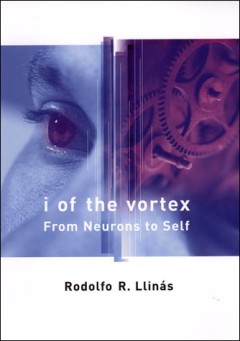
I of the vortex : from neurons to self
"A Bradford book."In I of the Vortex, Rodolfo Llinas, a founding father of modern brain science, presents an original view of the evolution and nature of mind. According to Llinas, the 'mindness state' evolved to allow predictive interactions between mobile creatures and their environment. He illustrates the early evolution of mind through a primitive animal called the 'sea squirt.' The mobile …
- Edition
- 1st ed.
- ISBN/ISSN
- 9780262278454
- Collation
- 1 online resource (x, 302 pages) : illustrations
- Series Title
- -
- Call Number
- 100 LLI i
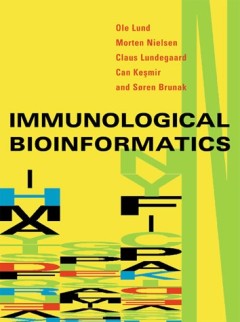
Immunological bioinformatics
"This book offers a description of bioinformatics techniques as they are applied to immunology, including a succinct account of the main biological concepts for students and researchers with backgrounds in mathematics, statistics, and computer science as well as explanations of the new data-driven algorithms in the context of biological data that will be useful of immunologists, biologists, and…
- Edition
- -
- ISBN/ISSN
- 9780262323338
- Collation
- 1 online resource (xii, 296 pages, 24 unnumbered pages of plates) : illustrations (some color).
- Series Title
- Computational Molecular Biology
- Call Number
- 001 LUN i
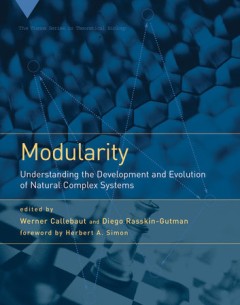
Modularity :understanding the development and evolution of natural complex sy…
Experts from diverse fields, including artificial life, cognitive science, economics, developmental and evolutionary biology, and the arts, discuss modularity.Modularity--the attempt to understand systems as integrations of partially independent and interacting units--is today a dominant theme in the life sciences, cognitive science, and computer science. The concept goes back at least implicit…
- Edition
- -
- ISBN/ISSN
- 9780262269698
- Collation
- 1 online resource (xvi, 455 pages) :illustrations.
- Series Title
- -
- Call Number
- -
 Computer Science, Information & General Works
Computer Science, Information & General Works  Philosophy & Psychology
Philosophy & Psychology  Religion
Religion  Social Sciences
Social Sciences  Language
Language  Pure Science
Pure Science  Applied Sciences
Applied Sciences  Art & Recreation
Art & Recreation  Literature
Literature  History & Geography
History & Geography